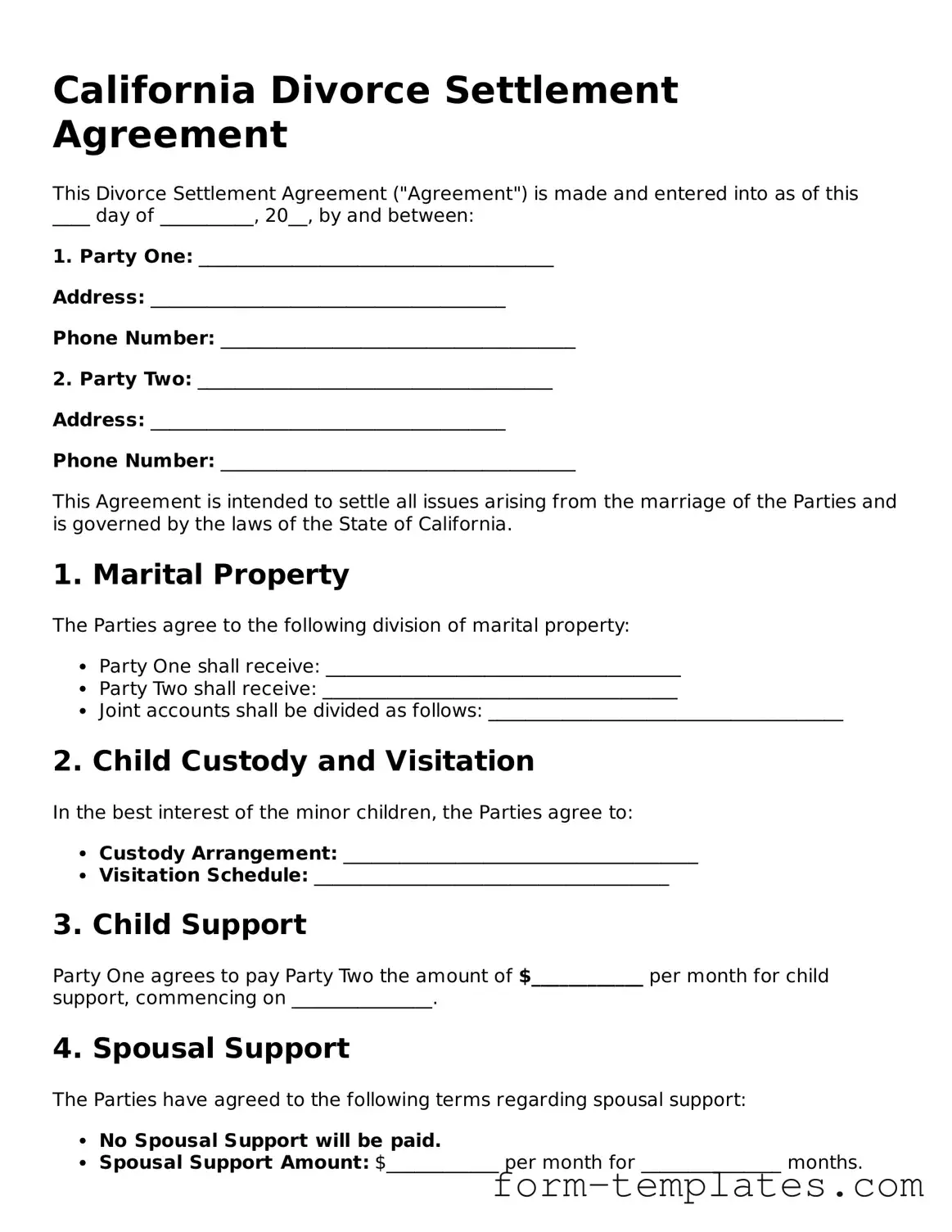California Divorce Settlement Agreement
This Divorce Settlement Agreement ("Agreement") is made and entered into as of this ____ day of __________, 20__, by and between:
1. Party One: ______________________________________
Address: ______________________________________
Phone Number: ______________________________________
2. Party Two: ______________________________________
Address: ______________________________________
Phone Number: ______________________________________
This Agreement is intended to settle all issues arising from the marriage of the Parties and is governed by the laws of the State of California.
1. Marital Property
The Parties agree to the following division of marital property:
- Party One shall receive: ______________________________________
- Party Two shall receive: ______________________________________
- Joint accounts shall be divided as follows: ______________________________________
2. Child Custody and Visitation
In the best interest of the minor children, the Parties agree to:
- Custody Arrangement: ______________________________________
- Visitation Schedule: ______________________________________
3. Child Support
Party One agrees to pay Party Two the amount of $____________ per month for child support, commencing on _______________.
4. Spousal Support
The Parties have agreed to the following terms regarding spousal support:
- No Spousal Support will be paid.
- Spousal Support Amount: $____________ per month for _______________ months.
5. Debts
The Parties agree that the marital debts shall be divided as follows:
- Party One shall be responsible for: ______________________________________
- Party Two shall be responsible for: ______________________________________
6. Miscellaneous Provisions
This Agreement constitutes the entire understanding between the Parties regarding the subject matter herein and supersedes all prior discussions and agreements.
This Agreement may be modified only in writing, signed by both Parties.
IN WITNESS WHEREOF, the Parties hereto have executed this Divorce Settlement Agreement as of the day and year first written above.
Party One Signature: ___________________________ Date: _______________
Party Two Signature: ___________________________ Date: _______________
